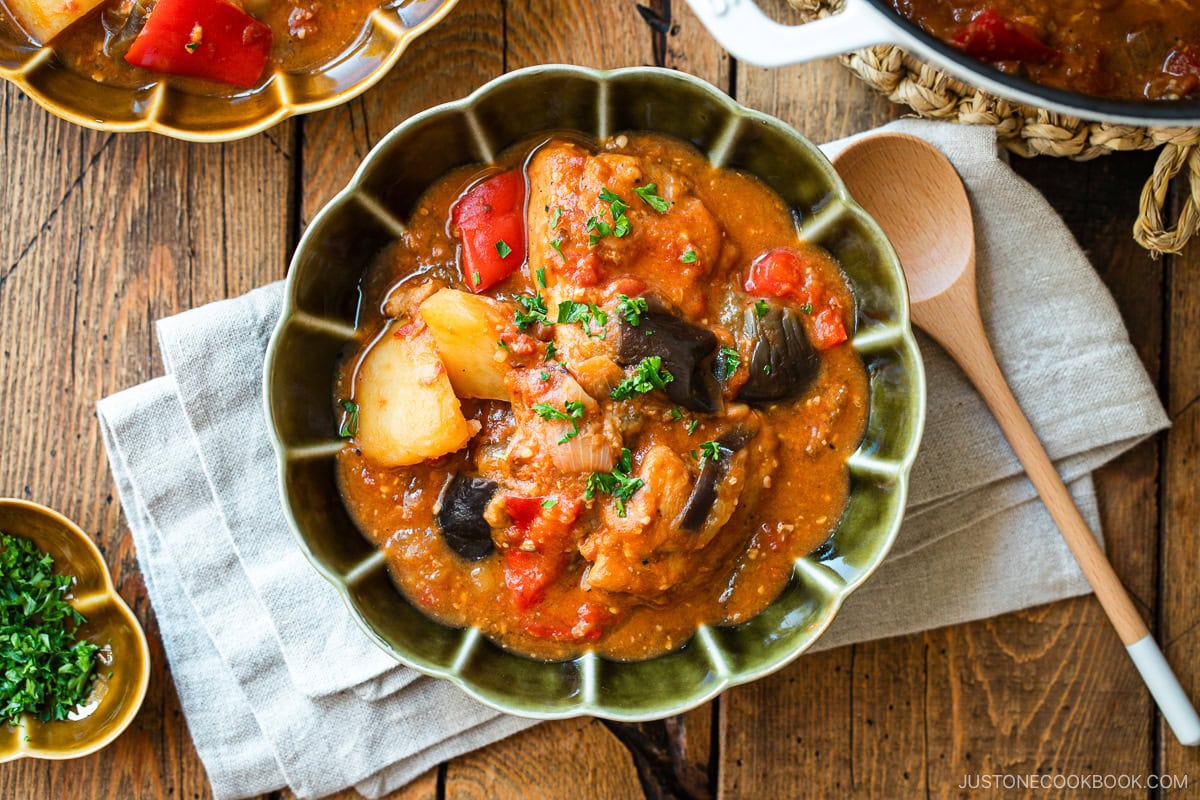
This Miso Tomato Chicken Stew is the ultimate comfort food, packed with rich flavors and umami goodness. With just a few simple steps, you’ll enjoy a deliciously hearty stew featuring tender chunks of chicken and perfectly cooked vegetables.
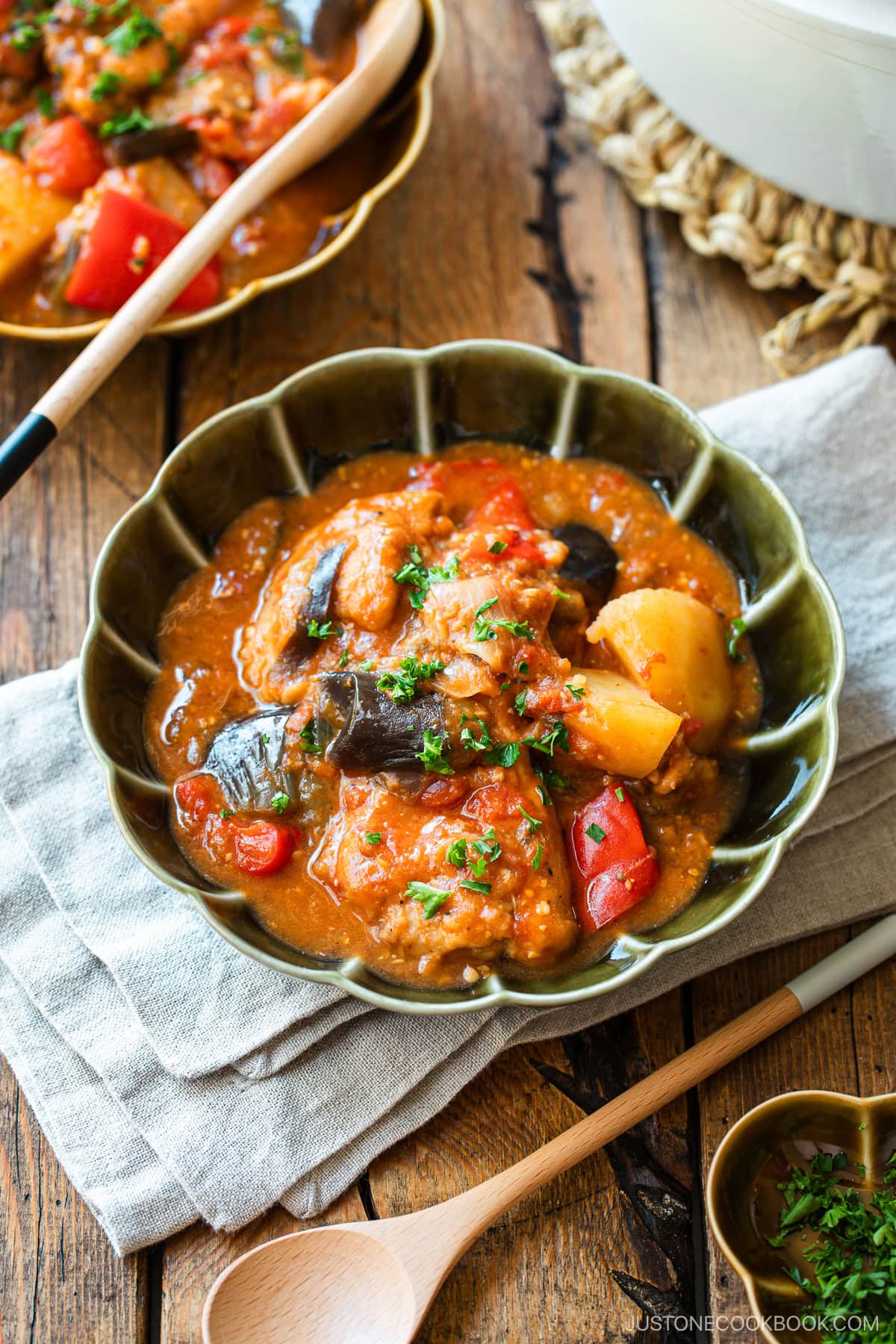
As the weather cools down, I crave hearty and nourishing meals that warm my body and soul. This savory Miso Tomato Chicken Stew recipe does just that! I’ll show you how easy it is to make this delicious one-bowl meal at home.
If you’re craving more comforting Japanese stew recipes, try my Japanese Cream Stew, Oden, and Japanese Stewed Hamburger Steak next!
Why I Love This Recipe
- Wonderful depth of flavor – You’ll be surprised how miso adds a savory flavor profile to this dish!
- Nutritious one-bowl meal – This stew is chock-full of veggies and protein. I add hot steamed rice or crusty bread to round out the meal.
- Meal-prep friendly – This stew tastes even better on the second day! I usually make it ahead for tomorrow night’s dinner.
- Easy to customize – Swap the proteins and vegetables with what you have on hand or switch out the chicken to make it plant-based.

Ingredients for This Recipe
- miso
- boneless, skinless chicken thighs
- whole peeled or crushed canned tomato and juice
- red bell pepper
- Japanese or Chinese eggplant
- russet potato
- onion
- garlic
- parsley
- salt and ground black pepper
- all-purpose flour
- extra virgin olive oil
- sake
- water
Find the printable recipe with measurements below.
Substitutions
- miso – You can use any type of miso that you have. Remember that miso varies in flavor and saltiness depending on the variety or brand, so please use less or more miso to taste.
- sake – If you don’t have it, you can substitute white wine or water.
- Japanese eggplant – Compared to other varieties, I do love Japanese eggplant in this dish because they are sweeter, more tender, have the thinnest skin, and become creamier when cooked.
Key Equipment
- A heavy-bottomed pot, such as a Dutch oven (more under Nami’s Recipe Tips)
How To Make Miso Tomato Chicken Stew
Preparation
Step 1 – Cut the vegetables. Slice the onion and red bell pepper into bite-size pieces, crush the garlic, and cut the eggplant into chunks using the rangiri Japanese cutting technique. Peel and cut the potato into chunks and soak in water.
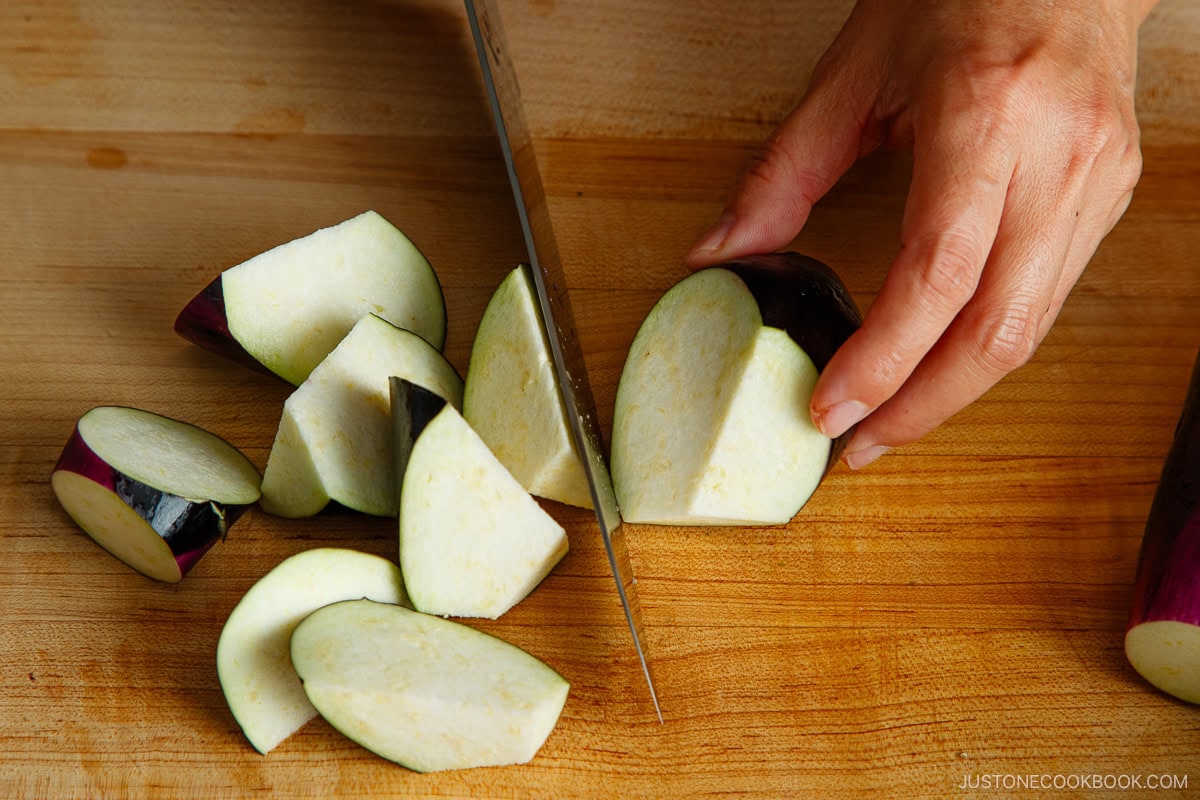
Step 2 – Cut the chicken and coat with flour. Trim the fat, cut the chicken into large pieces, and season with salt and pepper. Then, dredge with all-purpose flour. Here, I put the flour and chicken in my favorite large prep tray from JOC Goods and shake it with the lid on until the chicken is evenly coated.
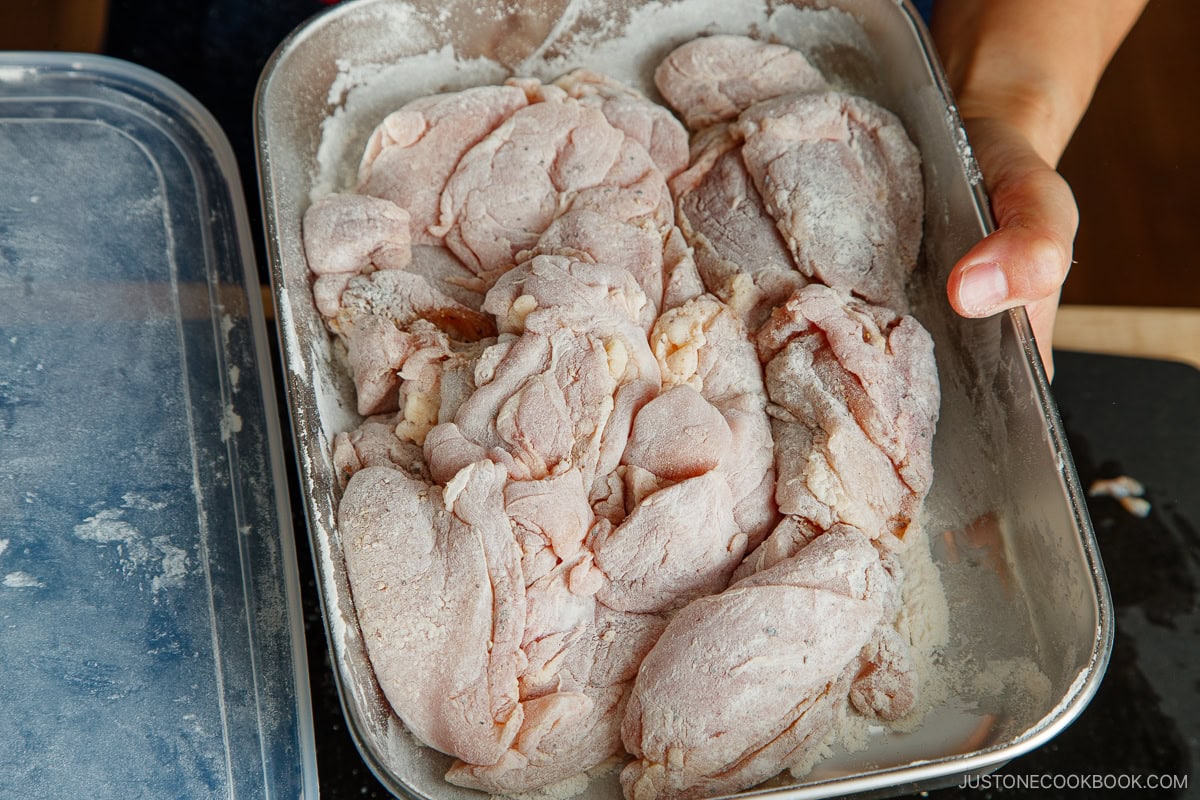
Cooking
Step 1 – Sear the chicken. Use a large frying pan (I use a carbon steel pan) over medium-high heat to sear the meat on one side, cooking in batches to avoid overcrowding the pan. When a beautiful crust forms, flip to sear the other side. Remove the chicken to a tray or plate.
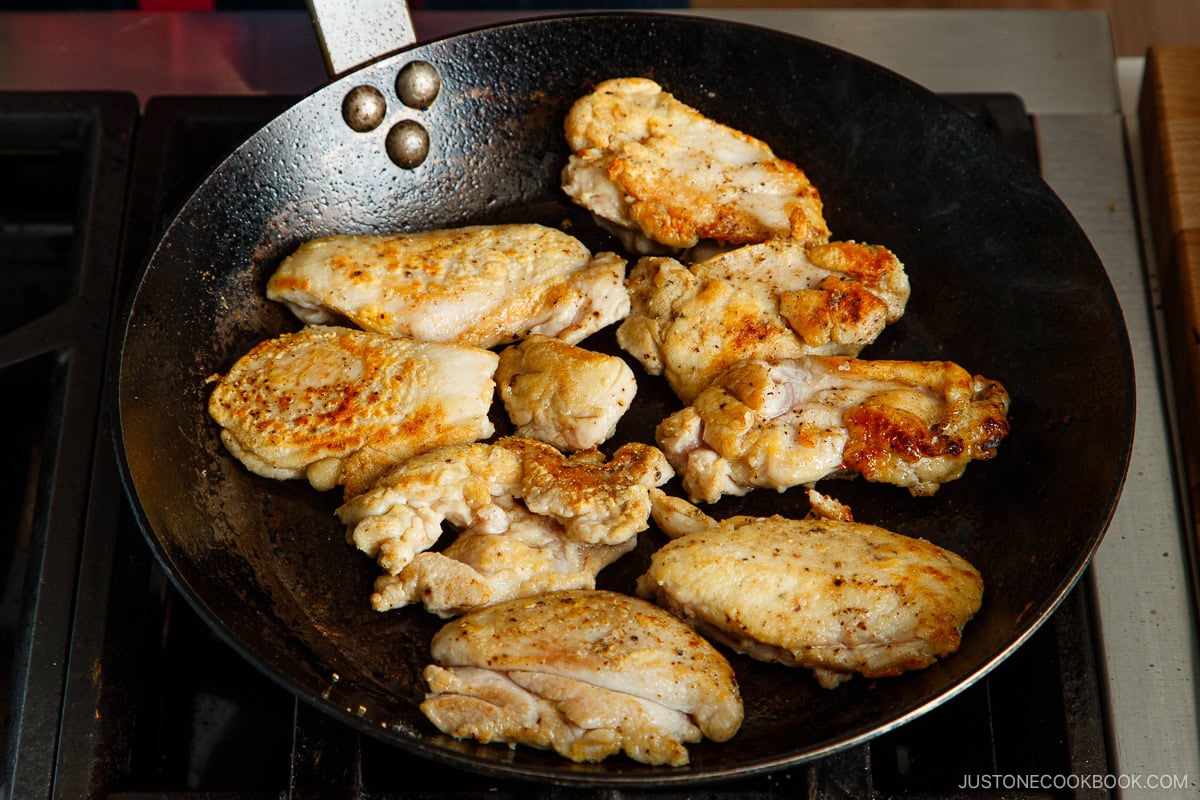
Step 2 – Add the onion and deglaze the pan. Cooking the onion slices will help deglaze some of the caramelized brown bits (fond) on the bottom of the pan from cooking the chicken. Add a splash of sake and loosen the rest with a spatula.
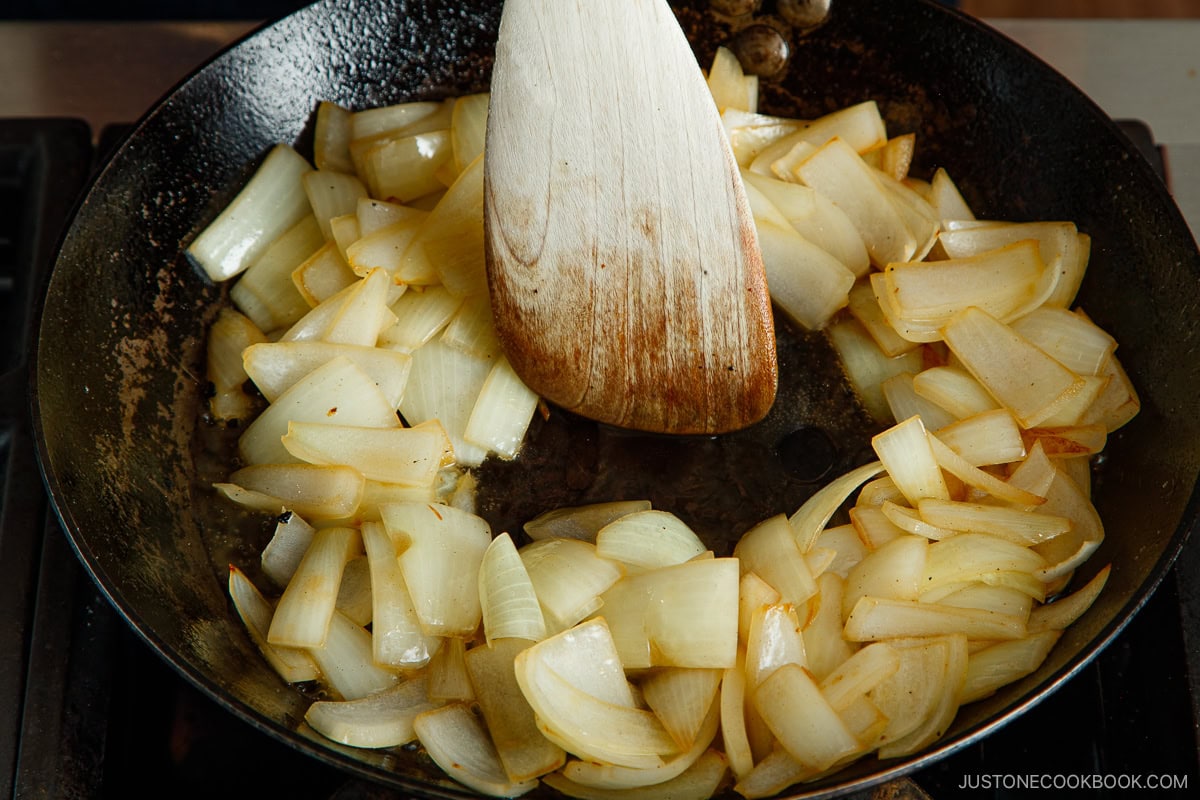
Step 3 – Simmer the stew in a Dutch oven for 45 minutes. Add all the ingredients to a heavy-bottomed pot except for the potatoes, miso, and parsley. It will seem like a lot of vegetables at first, but they will sweat and release moisture as they cook. Eventually, the veggies will shrink and create enough liquid to cover the ingredients.
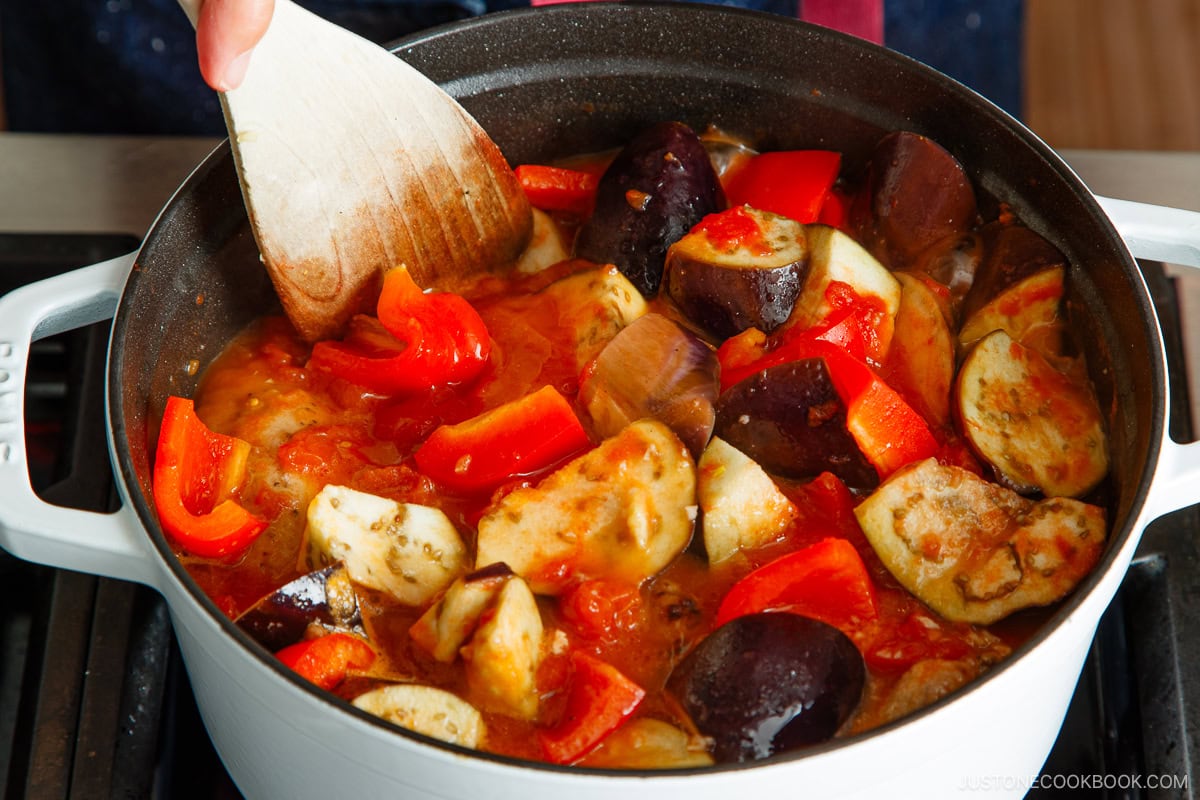
Step 4 – Add the miso and potatoes and gently simmer for 15–20 minutes. Dissolve the miso in a ladleful of hot broth before releasing it to the stew.
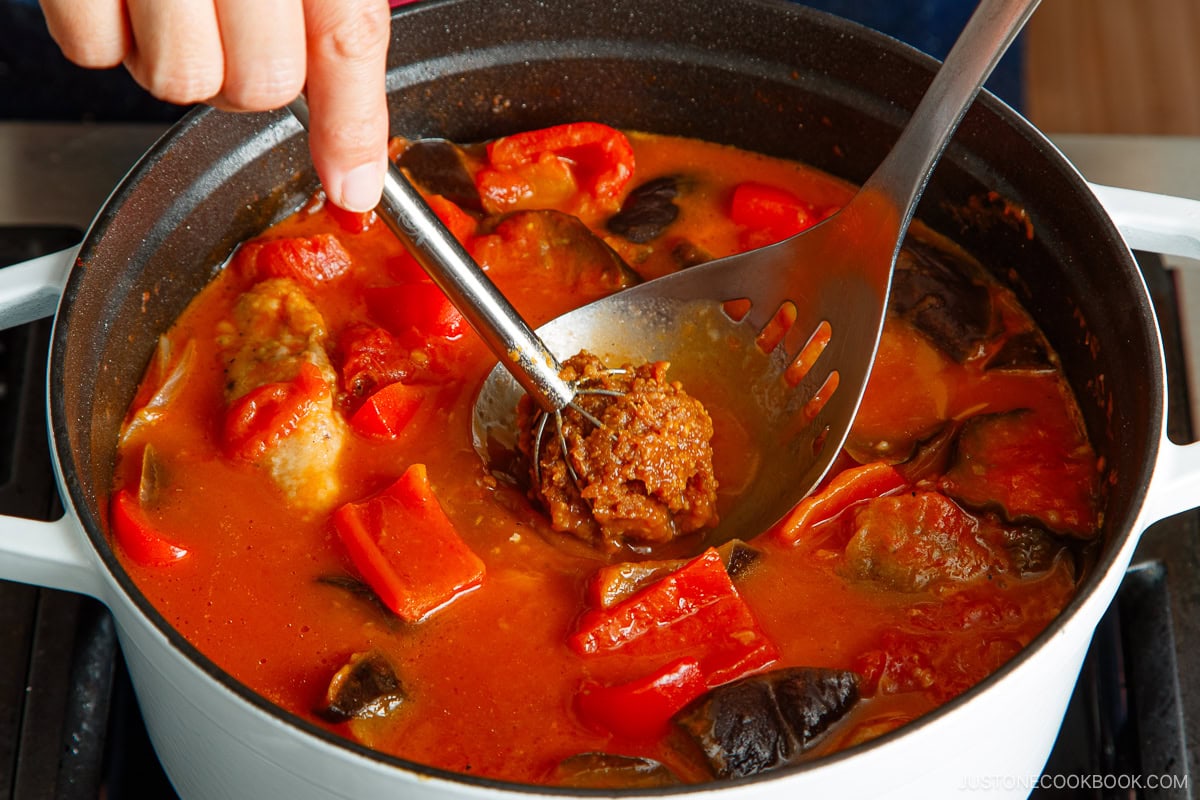
Step 5 – Serve! Check that the potato is cooked. When a skewer goes through easily, it’s done! Garnish with chopped parsley and enjoy.
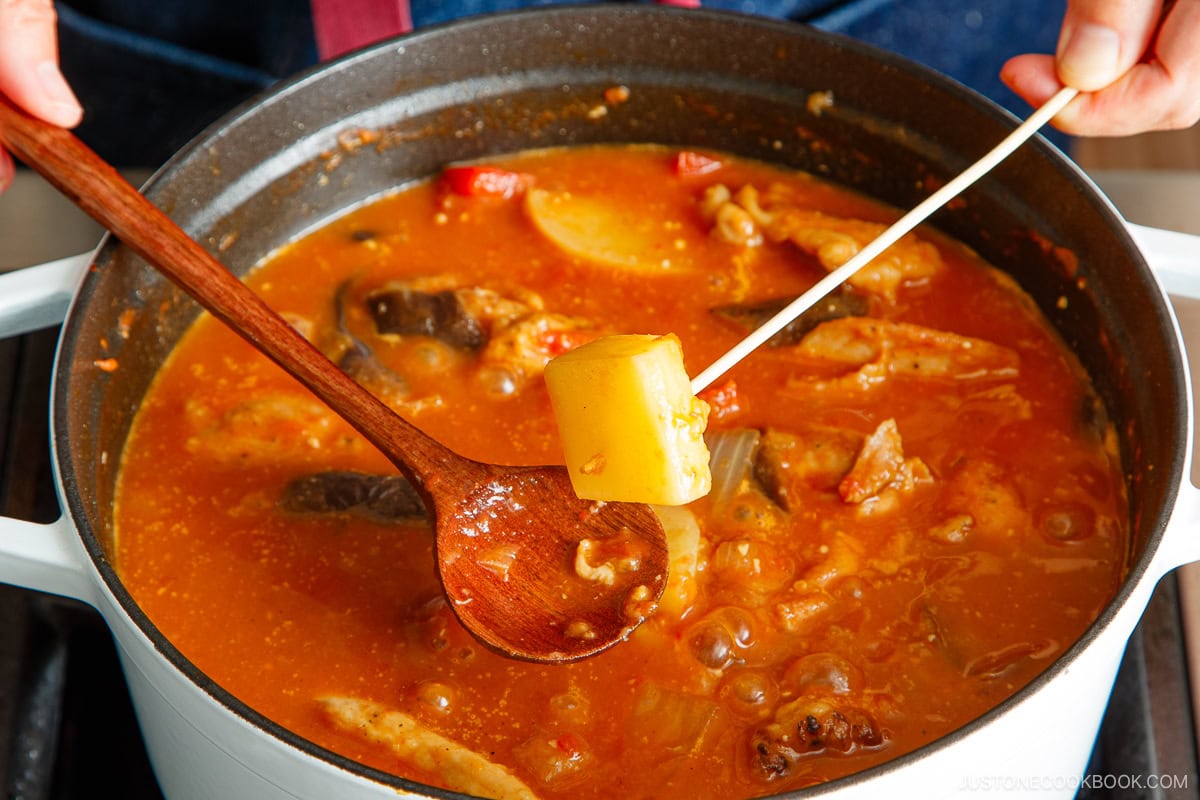

Nami’s Recipe Tips
- Cut the chicken into large pieces – Keeping the meat in larger chunks will help it stay juicy and prevent it from falling apart while the stew cooks.
- Coat the chicken in flour to seal in the juices – The flour acts as a shield when you sear the chicken to keep it from releasing its juices. It also thickens the broth later, adding body to the stew.
- Deglaze the pan – Add a splash of sake (or white wine or water) to release the tasty, caramelized brown bits on the bottom of the frying pan from cooking the chicken. This fond adds wonderful depth of flavor!
- Use a heavy-bottomed pot with a snug lid – Cook the stew low and slow. The even heat and moisture retention from a heavy-bottomed pot and lid will yield the most tender results. I use a 4-QT Staub for this recipe.
- Add the miso toward the end – I add the miso last to preserve its flavor, aroma, and nutrients. Dissolve the miso completely before releasing it into the stew, then simmer it gently; avoid boiling it aggressively.
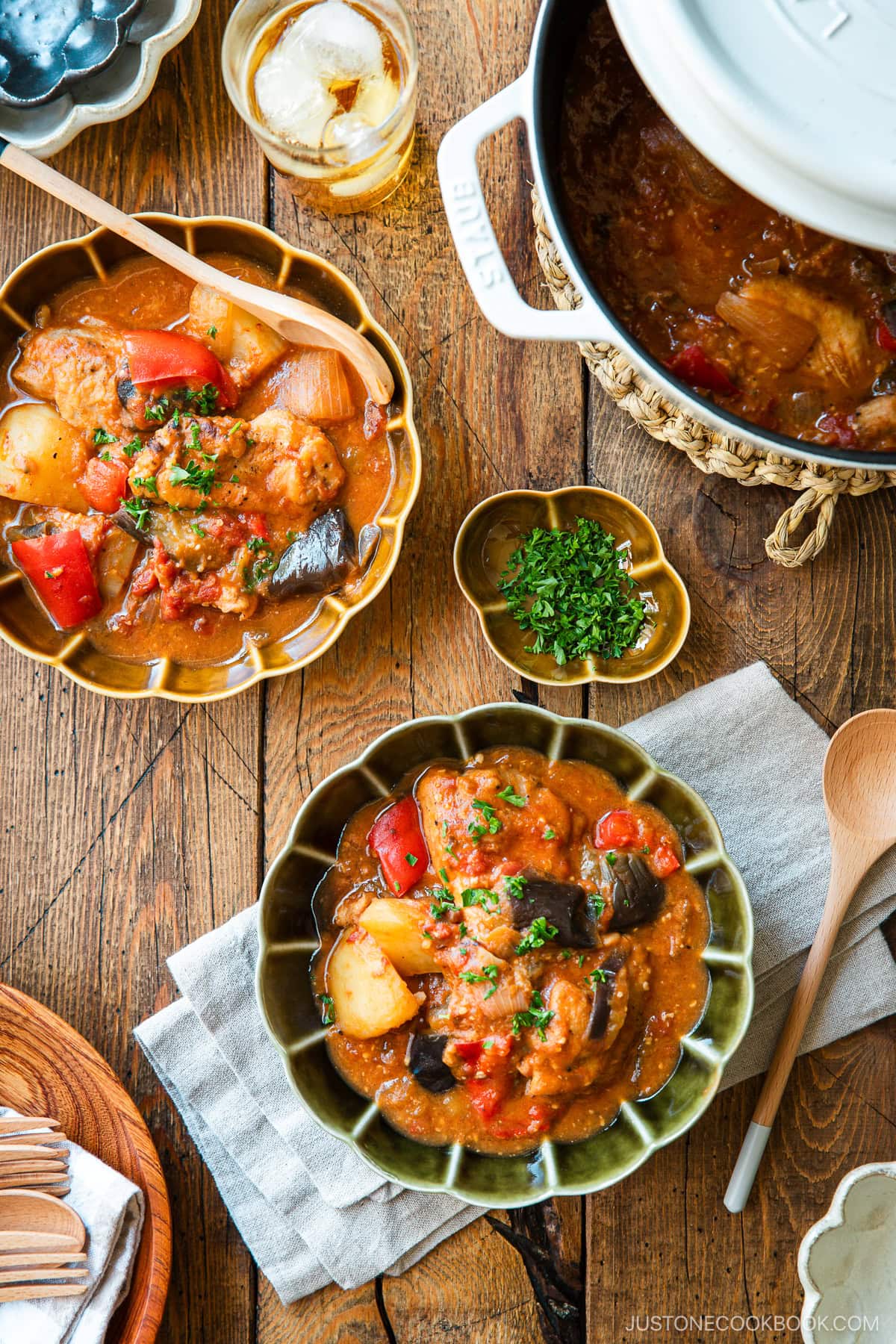
Variations and Customizations
This Miso Tomato Chicken Stew is easy to customize with your favorite ingredients or what you have on hand to suit your preferences or dietary needs.
- Try different proteins. This stew would be delicious with other proteins like beef, pork, shrimp, or seafood. Just remember that you’ll need to cook beef and pork much longer to make them tender. In this case, I recommend adding the vegetables during the last hour of cooking so they don’t get too soft and mushy. On the flip side, shrimp and seafood cook quickly, so you’ll add them toward the end of cooking.
- Use your favorite or in-season vegetables. I use sweet red bell pepper, eggplant, and potatoes here to give this garlicky and savory tomato-based stew a Mediterranean twist that’s reminiscent of Provençal stew or Italian cacciatore. However, I encourage you to customize the dish with your favorite veggies or what’s in season like zucchini, squash, mushrooms, rutabaga, parsnips, and carrots!
- Boost more flavor. You can swap water with vegetable stock, chicken stock, or even dashi (Japanese soup stock), if you’d like. Please keep in mind that both miso and stock/broth vary in saltiness depending on the variety or brand, and you can’t take away the salt once you add it. To avoid oversalting this stew the first time you make it, I suggest using half stock and half water, then adjusting the seasoning later.
- Make it vegan/vegetarian. Swap the chicken for mushrooms or baked/extra firm tofu to make it a plant-based meal.
What To Serve with Miso Tomato Chicken Stew
Since this stew is a meal in itself, loaded with chicken and vegetables in a thick, hearty sauce, we love to serve it with simple sides:
Storage and Reheating Tips
To store: You can keep the leftovers in an airtight container and store in the refrigerator for up to 3–4 days.
To freeze: Remove the potatoes as their texture changes when frozen. You can keep it in an airtight container in the freezer for up to a month. Thaw in the refrigerator overnight before reheating.
To reheat: For the best results, reheat the leftovers gently on low heat until warmed through.
Frequently Asked Questions
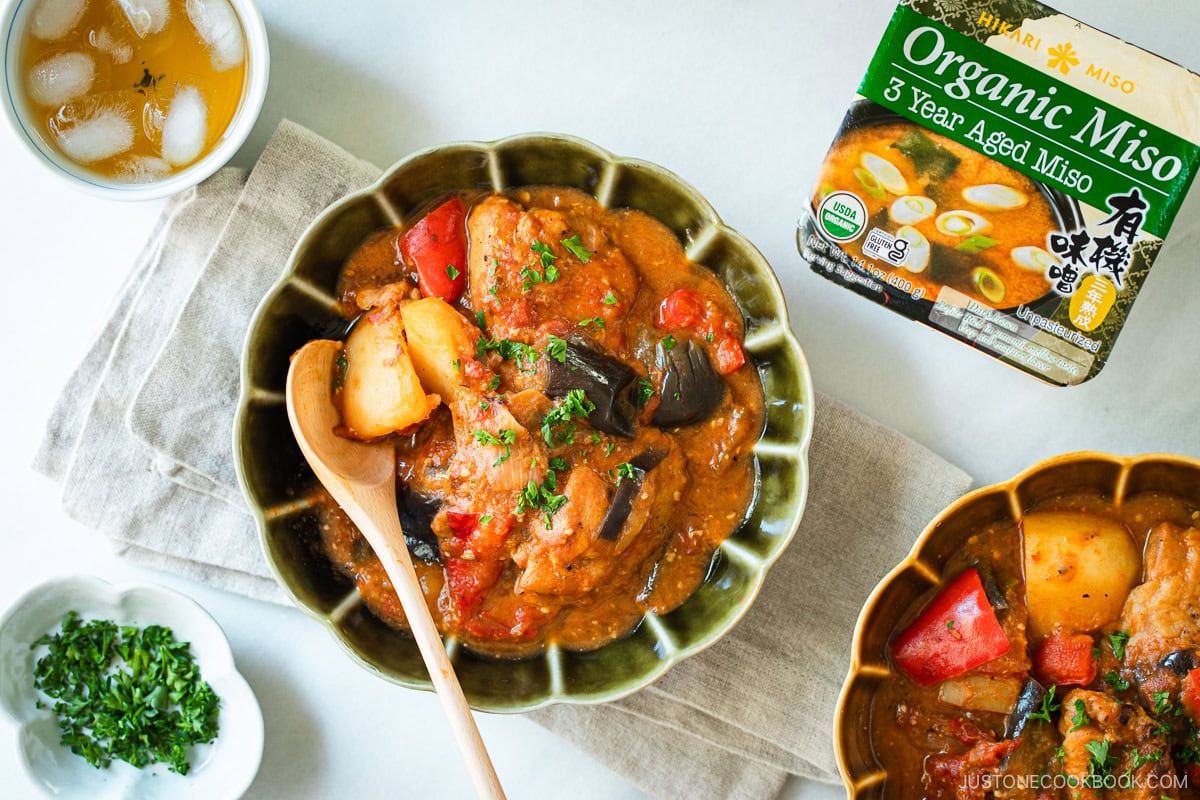
What miso would you recommend for this recipe?
I have been using different miso varieties from Hikari Miso for nearly two decades, and its new Organic Miso 3 Year Aged Miso is by far my favorite! This premium long-aged miso features a deep brown color and complex, fermented flavor profile. It boasts a rich taste, a deep aroma, and bold umami that elevates every dish. I use it across various recipes, and it consistently enhances the flavors in my cooking!
Yes, you can definitely make the stew ahead of time! Making it a day or two in advance often enhances the flavors as they have more time to meld together. Store it in an airtight container in the refrigerator and reheat gently over low heat when ready to serve.
Yes, you can, but keep in mind that fresh tomatoes usually have a slightly different flavor and consistency, so you may want to simmer the stew a bit longer to achieve the desired thickness and depth of flavor (so think about when to put the veggies inside so they won’t overcook?). To substitute, you’ll need to peel and chop the fresh tomatoes and need about 4-5 fresh tomatoes to replace a 14-ounce can of tomatoes.
More Japanese Stew Recipes
If you love this Miso Tomato Chicken Stew, you’re in for a treat with these other irresistible Japanese stew recipes.
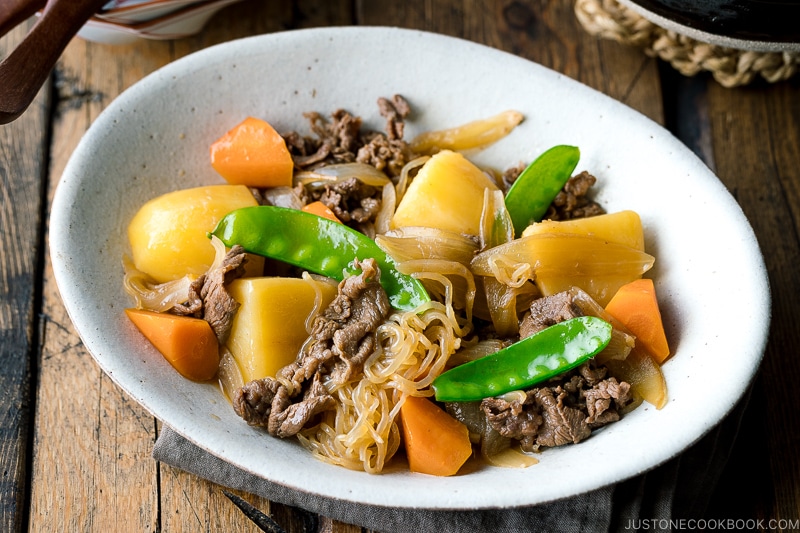
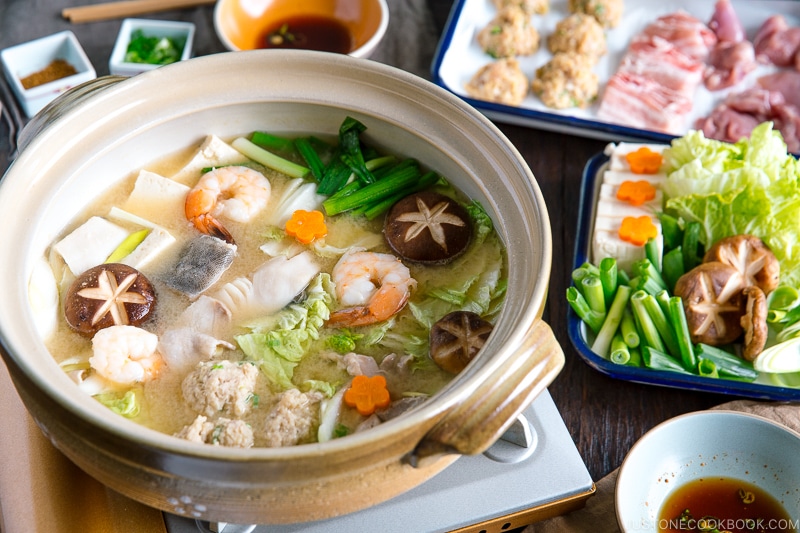
- 1 onion
- 1 red bell pepper
- 2 Japanese or Chinese eggplants (11 oz, 300 g; I love them but you can reduce if you’re not a big fan; Japanese eggplants are sweeter, more tender, have the thinnest skin, and become creamier when cooked)
- 1 russet potato
- 3 cloves garlic
- 5 sprigs parsley (for garnish)
- 1 (14-oz) can whole peeled or crushed tomato and juice
- 1½ lbs boneless, skinless chicken thighs
- 1 tsp Diamond Crystal kosher salt (for the chicken, to taste)
- ⅛ tsp freshly ground black pepper (for the chicken, to taste)
- 3 Tbsp all-purpose flour (plain flour) (for the chicken)
- 3 Tbsp extra virgin olive oil (divided; for cooking the chicken and onions)
- 3 Tbsp sake (you can substitute white wine or water)
- 1 cup water (optionally, you can use vegetable or chicken stock/broth; since miso varies in saltiness, first use half stock and half water so you don’t oversalt the dish, then adjust the seasoning at the end of cooking)
- 3 Tbsp miso (miso varies in saltiness depending on the variety or brand; adjust the amount, to taste)
Prevent your screen from going dark
To Sear the Chicken
-
Heat a large frying pan (I use a carbon steel pan for better browning and easier to flip) over medium-high heat. When the pan is hot, add 1 Tbsp of extra virgin olive oil. Add several chicken pieces to the hot oil and sear on one side until a beautiful crust forms, about 2 minutes. Cook in batches and do not crowd the pan to avoid steaming the chicken.
-
Flip over to sear the other side, then transfer to a tray or plate.
-
Continue to sear the rest of the chicken and transfer it to the tray. Lower the heat to medium heat.
-
To the same pan, add about 1 Tbsp of the oil. When the oil is hot, add the onions.
-
Stir with a wooden spatula and cook the onions until golden brown. If the onions are burning, reduce the heat to medium-low.
-
Add 3 Tbsp sake and use the spatula to scrape off the caramelized brown bits (fond) on the bottom of the pan from cooking the chicken.
To Add the Miso and Potatoes
-
After 45 minutes, open the lid and give the stew a gentle stir. Next, completely dissolve 3 Tbsp miso in a ladleful of hot broth before releasing it to the stew. I use a miso muddler and large Japanese draining ladle, or you could use chopsticks and a standard ladle.
-
Drain the potatoes. Add them to the stew, cover the pot, and gently simmer for 15–20 minutes.
-
Check if the potatoes are cooked by inserting a wooden skewer; if it easily pierces a potato, it’s done. Finally, taste the stew and adjust the seasoning. You can add a tiny bit of miso or salt here to bring out more flavor, if you’d like; I usually don’t need to add more.
To Store
-
You can keep the leftovers in an airtight container and store in the refrigerator for up to 3–4 days. This stew tastes even better on the second day. To freeze, remove the potatoes as their texture changes when frozen. You can keep it in the freezer for up to a month.
Calories: 473 kcal · Carbohydrates: 35 g · Protein: 39 g · Fat: 19 g · Saturated Fat: 3 g · Polyunsaturated Fat: 3 g · Monounsaturated Fat: 10 g · Trans Fat: 0.03 g · Cholesterol: 162 mg · Sodium: 906 mg · Potassium: 1274 mg · Fiber: 7 g · Sugar: 11 g · Vitamin A: 1323 IU · Vitamin C: 56 mg · Calcium: 87 mg · Iron: 4 mg
Discover more from reviewer4you.com
Subscribe to get the latest posts to your email.





